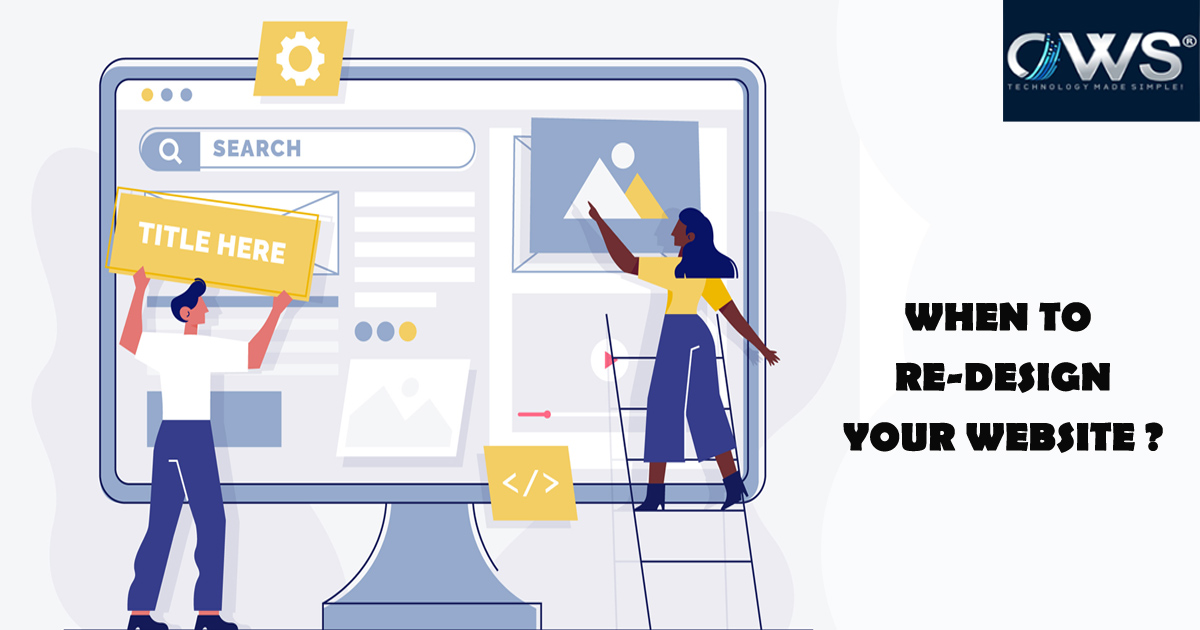The online or virtual world moves at a high speed. From sending messages from one corner of the globe to another in microseconds to placing a video call between two far-off countries, it can connect and transfer data within seconds. In such a rapidly changing environment, changes must be instant, or you can easily lag.
To maximize efficiency and reach a broader audience, businesses are turning to cross-platform app development. This strategy, employed by experienced web design companies in India, ensures that tablet apps function seamlessly across a range of devices, delivering a consistent user experience and expanding their reach.
Why an Outdated Design can Negatively Impact your Brand
In the ever-evolving digital landscape, a website is often your first point of contact with potential customers. It’s your online storefront, and its effectiveness can significantly impact your business’s success. Therefore, knowing when to re-design your website is crucial to staying competitive, user-friendly, and visually appealing.
Adapting to the ever-changing landscape of web technologies
Now with businesses depending hugely on their web domains and websites being one of the major revenue generators for any business, it is important to know when to re-design your website. Especially for online businesses, website design is the quintessential factor or deciding factor that needs to be properly taken care of.
Here are top 10 signs that it’s time for a website redesign:
1. Outdated Design
If your website looks like it’s stuck in the past, with dated colors, fonts, and visuals, it’s probably time for a modern makeover. An up-to-date design can instantly improve your brand image.
2. Slow Loading Speed
Slow-loading pages can lead to high bounce rates. Users expect a fast, responsive website, and if yours doesn’t deliver, it’s time to optimize it for speed.
3. Non-Responsive Design
With the increasing use of mobile devices, having a responsive design that adapts to various screen sizes is essential. If your website isn’t mobile-friendly, you’re missing out on a significant portion of your audience.
4. Low Conversion Rates
If your website isn’t converting visitors into customers or leads, it’s a clear sign that something needs to change. A website redesign can help improve your user experience and, subsequently, your conversion rates.
5. High Bounce Rate
A high bounce rate indicates that visitors are leaving your website quickly after arriving. This could be due to a lack of engaging content, confusing navigation, or an unattractive design.
6. Poor User Experience (UX)
User experience is paramount. If users find it difficult to navigate your site, locate information, or perform desired actions, it’s time to re-evaluate and improve your site’s UX.
7. Search Engine Ranking Drops
A drop in search engine rankings can be a sign of outdated content, poor SEO practices, or an unoptimized website. A redesign with SEO in mind can help you regain lost ground.
8. Security Concerns
If your website’s security is compromised, it can damage your reputation and put user data at risk. Ensure your website is up to date with the latest security features and protocols.
9. Branding Changes
If your business has undergone rebranding, your website should reflect these changes. Consistency in branding is essential for building trust with your audience.
10. Technology Advancements
Web technologies evolve rapidly. If your website relies on outdated technologies or plugins that are no longer supported, it can lead to functionality issues and security vulnerabilities.
Conclusion
In conclusion, recognising the right time to re-design your website is crucial in today’s rapidly changing online world. With websites playing a pivotal role in revenue generation, thoughtful consideration of website design is essential. Factors like mobile usability, adapting to product inventory changes and ensuring search engine visibility can drive a website redesign, improving user experience, boosting turnover, and expanding the audience. Proactively monitoring these factors is key to maintaining a competitive edge in the digital landscape.
In today’s digital landscape, responsive web design in India is no longer an option; it’s a necessity. It guarantees that websites are accessible and user-friendly on tablets, smartphones, and desktops. A reputable web design company in India can create responsive websites that provide a consistent and engaging user experience.








